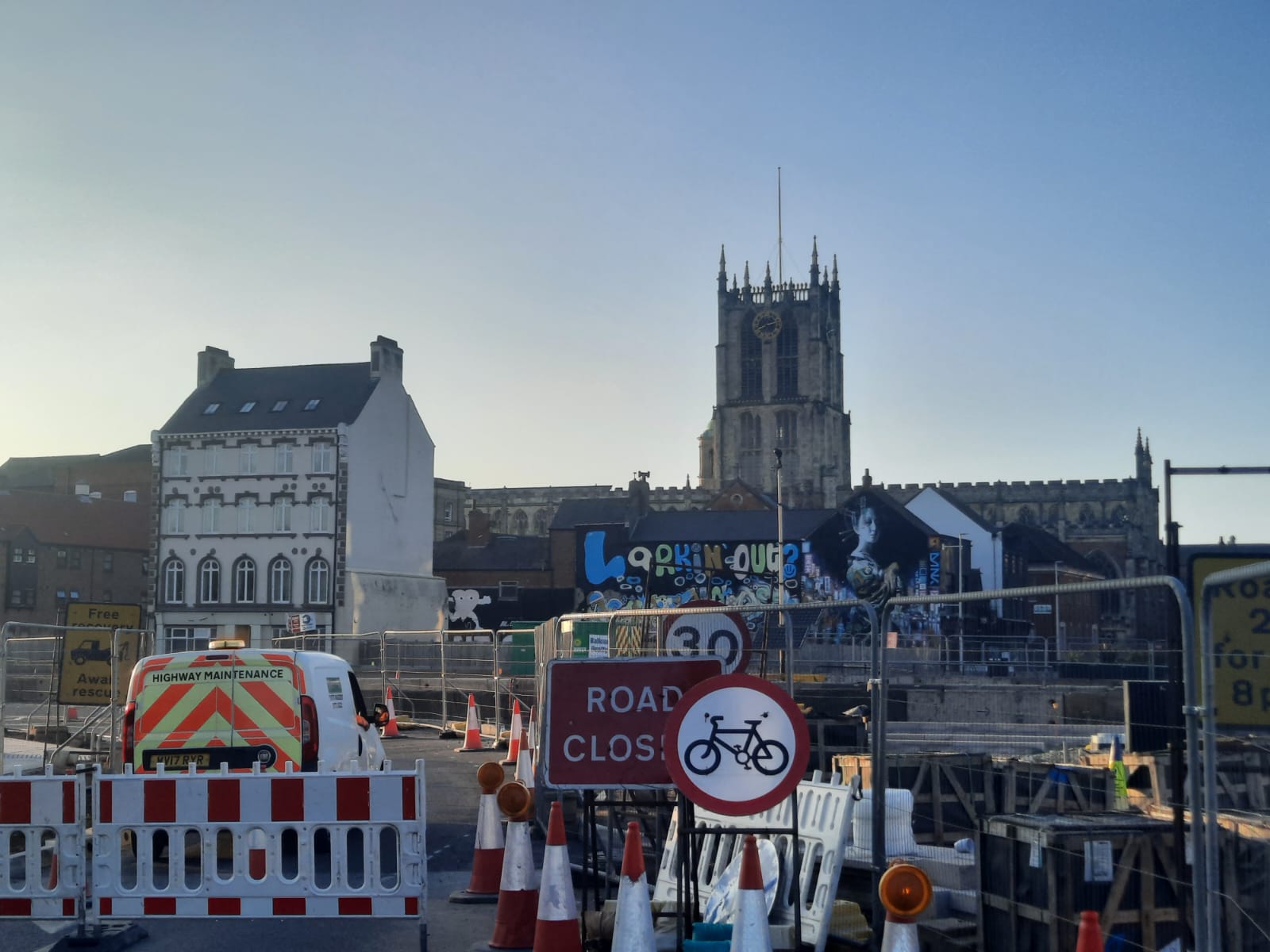24 Hours In Hull – A Guide For Culture Lovers
Hull, the UK’s 2017 City of Culture, has many points of interest for culture lovers. Check out recommendations below on how to spend a day in Yorkshire’s fourth-largest city.
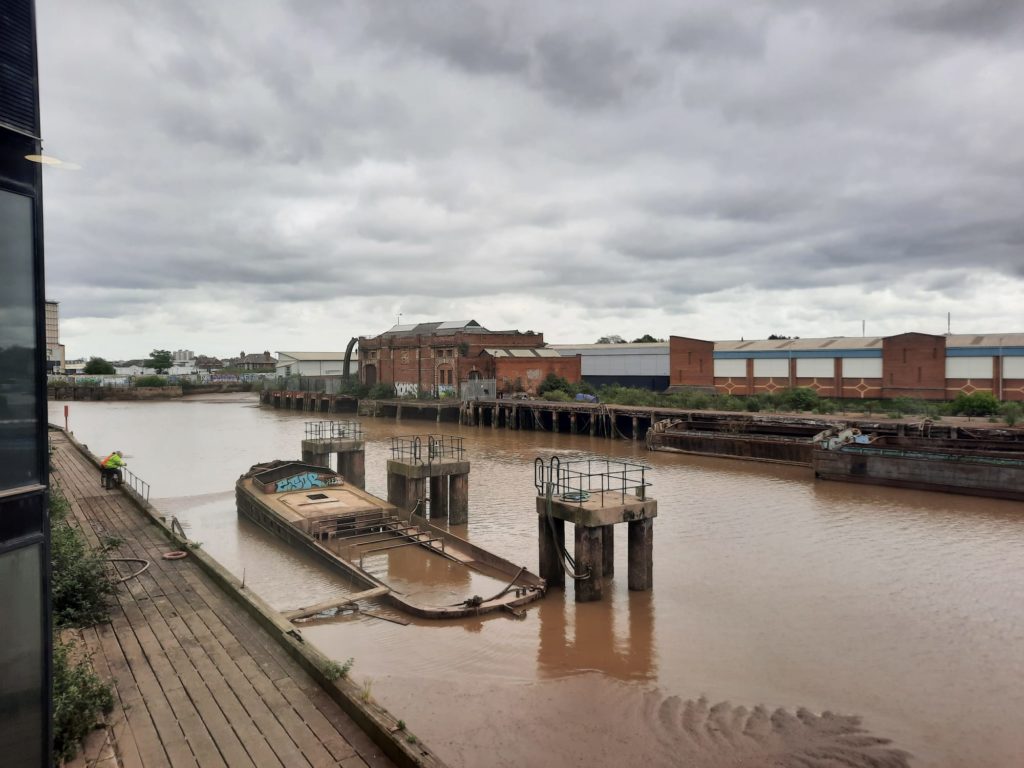
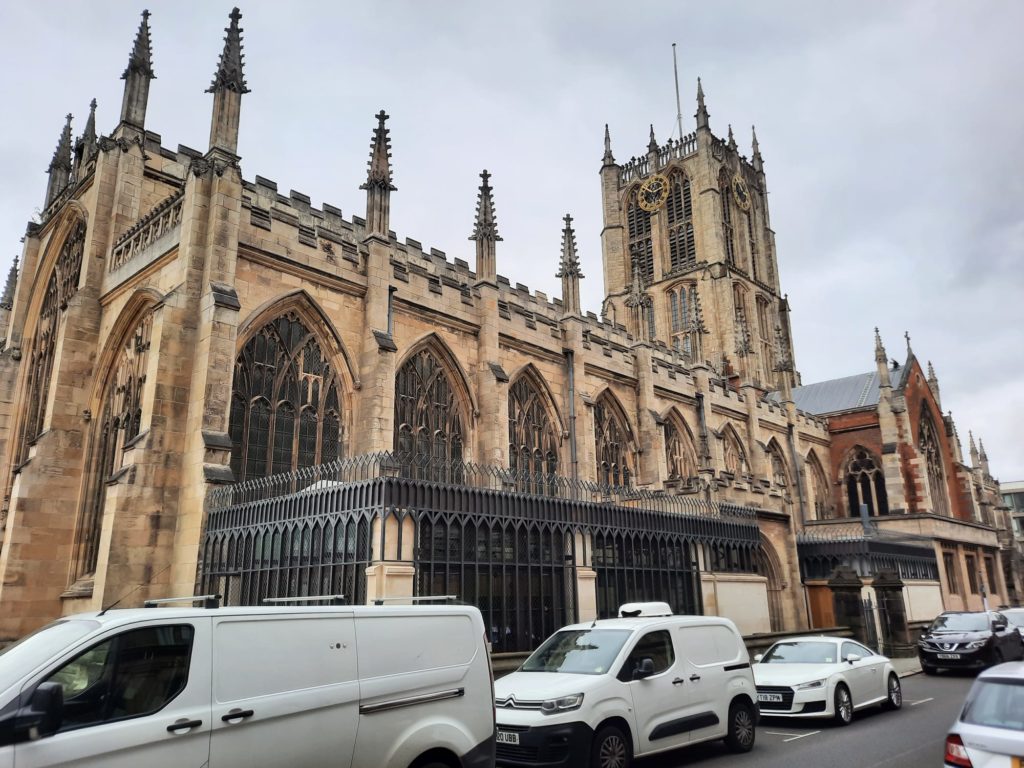

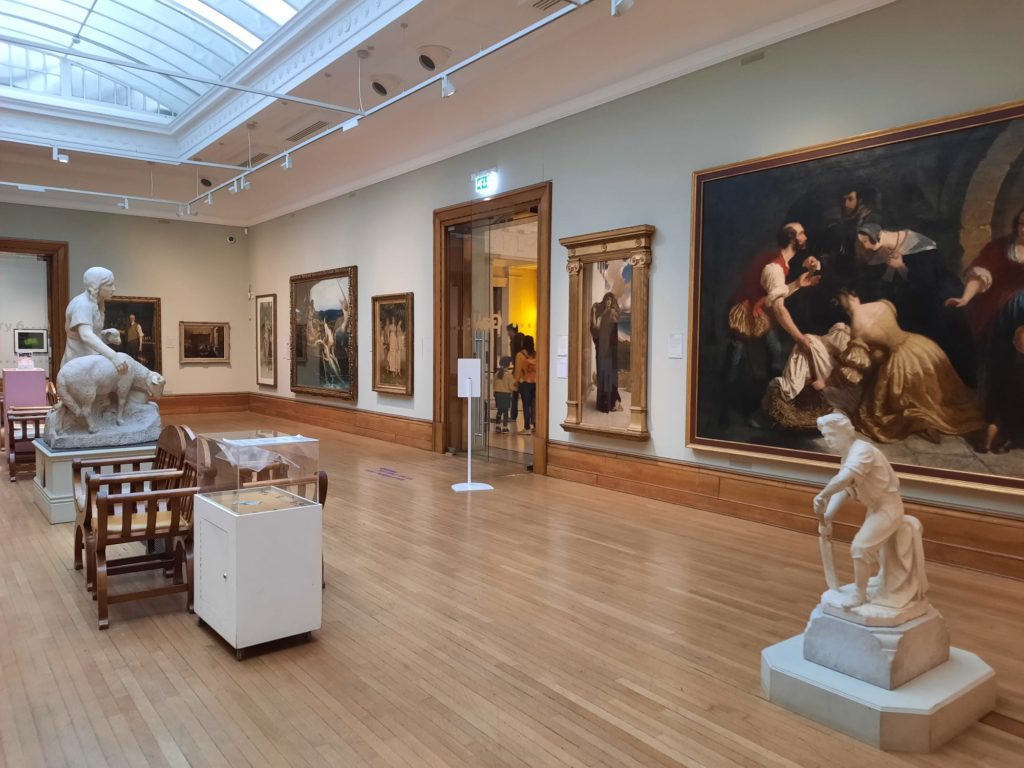
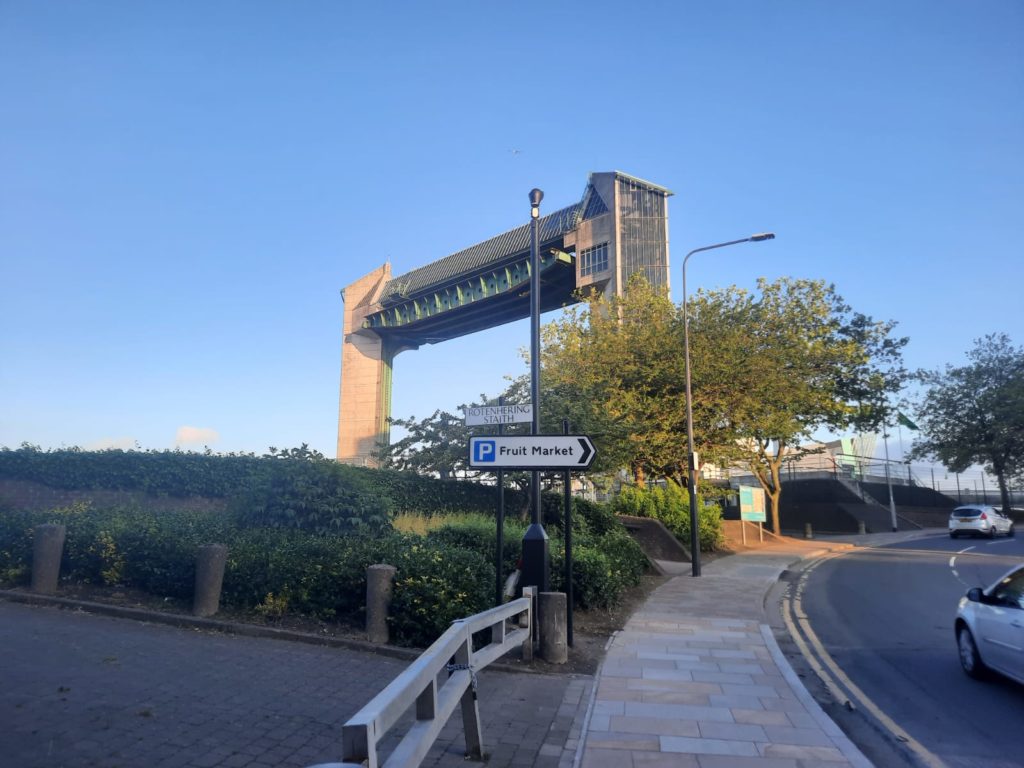
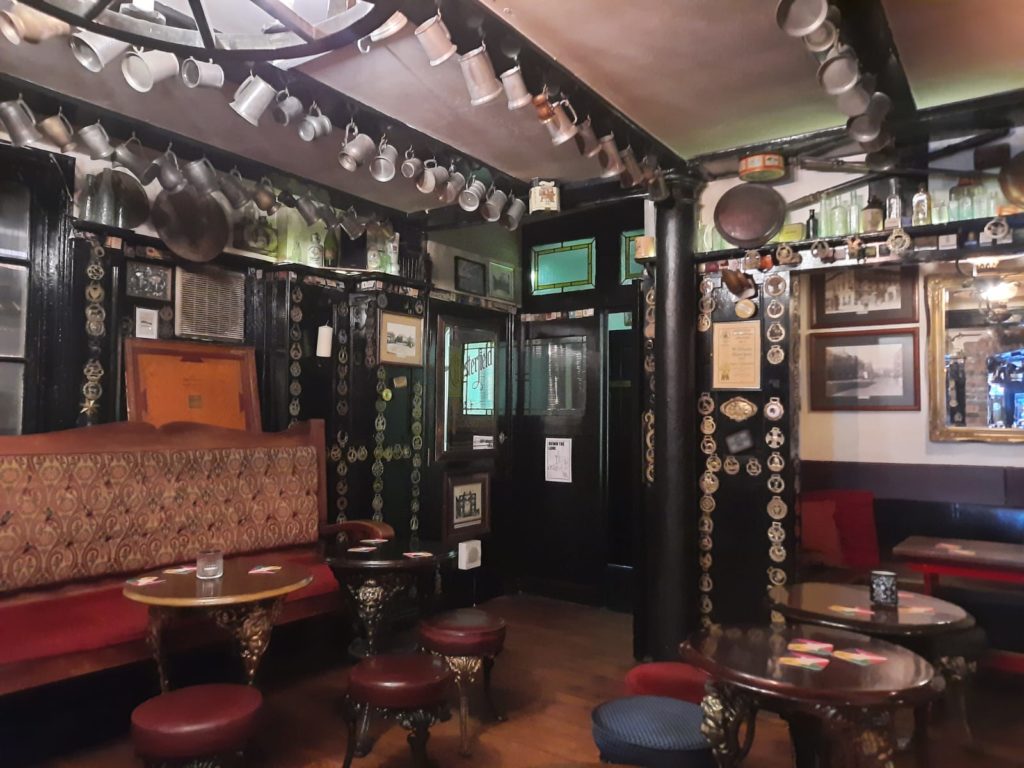
Hull: A Brief History and Orientation
Let’s start with names, shall we? Hull, a city of a bit under 300,000 inhabitants, hasn’t always been called Hull. And actually isn’t so today, technically. What began as the settlement of Wycke took on the royal moniker King’s Town when Edward I acquired it in the 1290s. Over time King’s Town became Kingston, so Hull is properly Kingston upon Hull. The city sits on the River Hull (obviously), at its confluence with the Humber Estuary. It has a rich history and cultural life which make it an enticing stop for culture lovers.
So Hull, as I said, started out as Wycke. Wycke was a port from which the monks of Meaux Abbey exported their wool. Wool was a very lucrative trade in the medieval period, and Wycke’s proximity to Europe made it a strategically important spot even if it wasn’t actually such a good place to build a town (no fresh water, for a start). But Edward I nonetheless liked what he saw, encouraged development, and built himself a manor house.
A little later in history, Hull also became an important site in the escalating tension between King and Parliament which led to the English Civil War. Both sides scrambled to secure the town, but the Parliamentarians triumphed and Charles I was refused entry. He besieged the town: an escalation into open conflict between the two sides.
As global trade developed, Hull’s port and maritime links helped the city to prosper. It was a Hanseatic hub at one point. Later on Hull traded with the Americas, British colonies and Europe. Whether Hull was indeed the place where a particularly virulent strain of syphilis entered Europe or that is just a vicious rumour you will have to decide for yourself. What is certain is that fortunes were made here in trade and also in shipping. By the early 20th century, Wilson Line of Hull was the largest privately owned shipping company in the world.
The 20th century was however a more difficult period in the city’s development. More than 95% of houses were damaged or destroyed in WWII. Shipping later started to move to container ships, and the whaling and fishing industries declined. In more recent years, as in many formerly industry-heavy cities, disused port and warehouse areas have been converted into shopping and leisure districts.
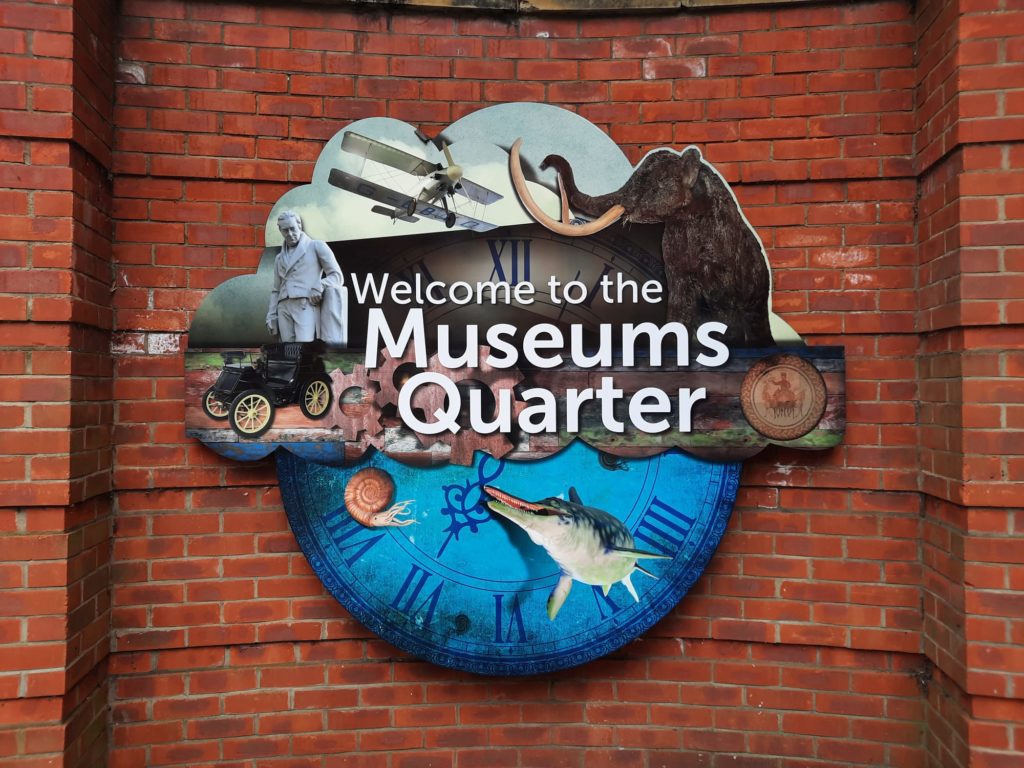
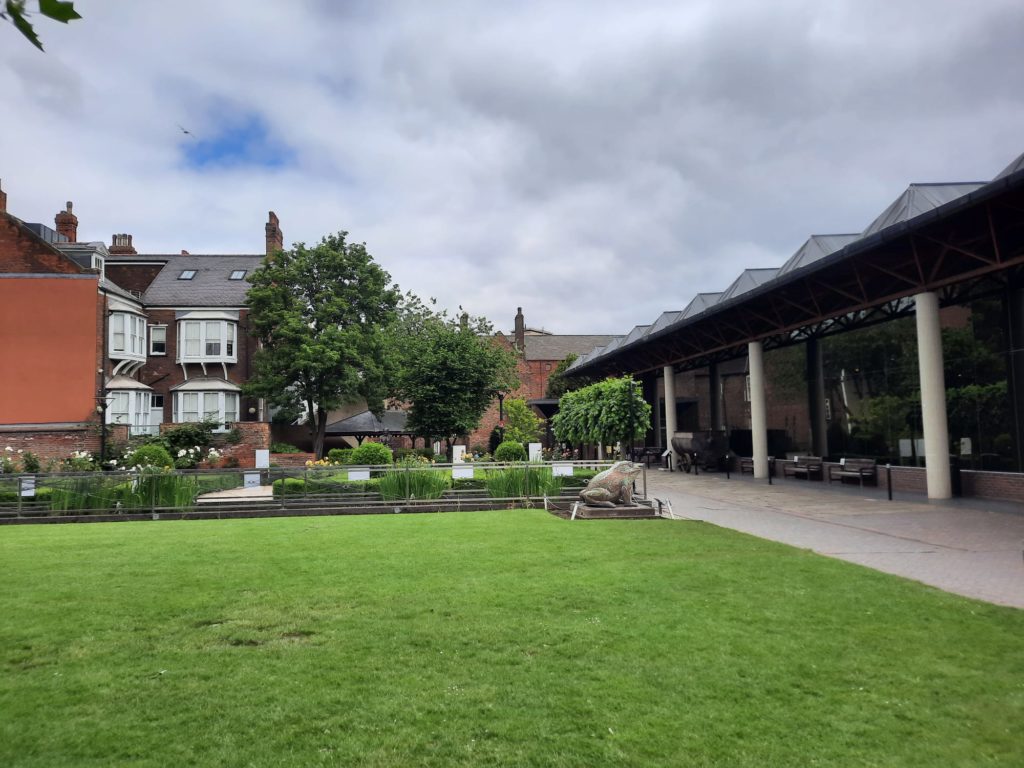
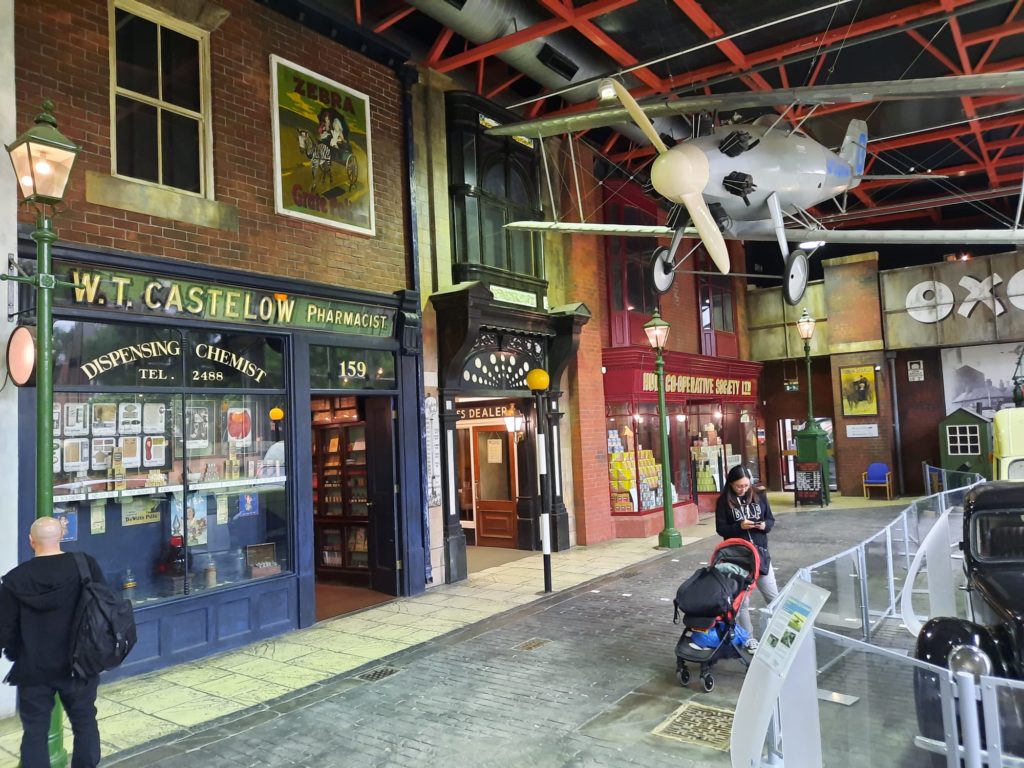
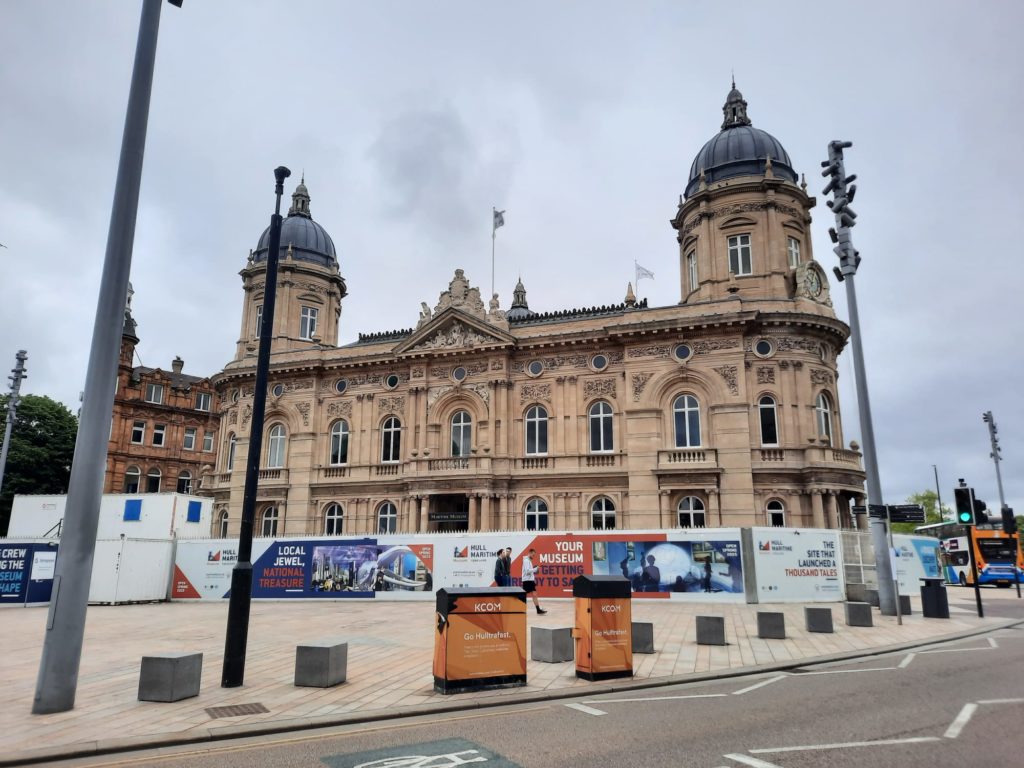
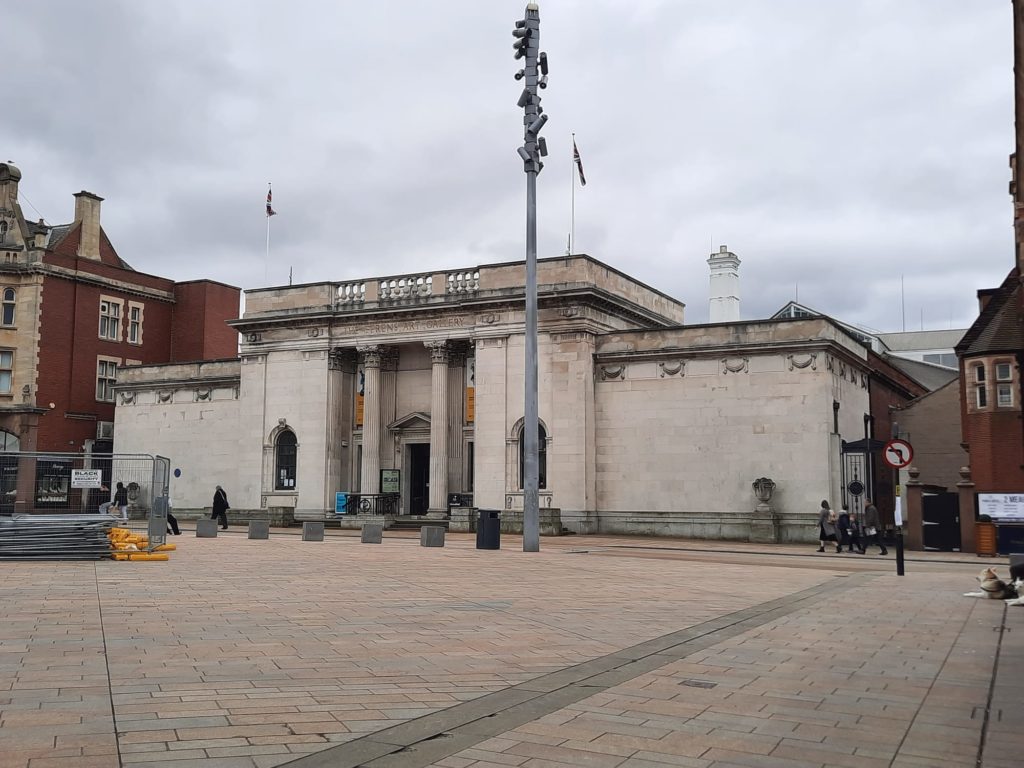
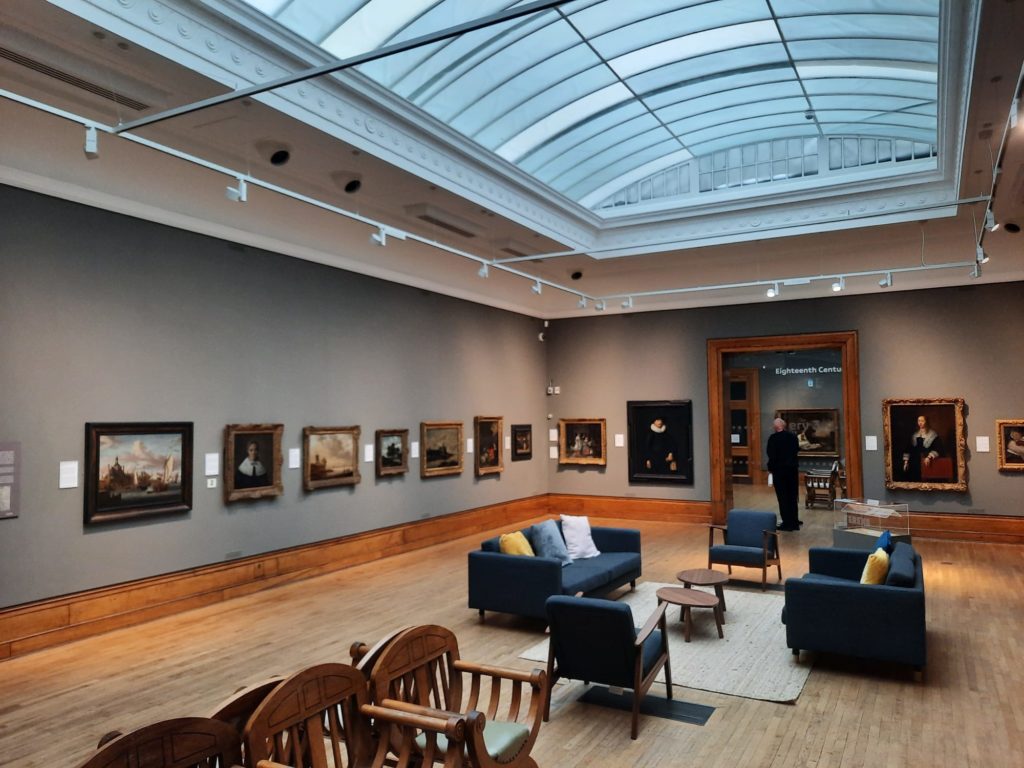
Museums
Let’s start our visit to Hull with its museums and galleries: often a good orientation point. As in many regional UK cities, Hull’s cultural institutions also underline some of those historic ebbs and flows we discussed above. For instance, the city’s primary venue for art is the Ferens Art Gallery. It replicates a phenomenon seen across the country of wealthy philanthropist benefactors establishing good regional art museums based on their own collections. It’s a reason the UK has vast public holdings of Victorian and Pre-Raphaelite paintings. The Ferens Art Gallery has continued to collect art to the present day, and also hosts temporary exhibitions. Adjacent to the Ferens Art Gallery but currently closed for renovations is the city’s Maritime Museum.
Next on the culture lover’s itinerary should be Hull’s Museums Quarter. I love a city that groups its museums together for easy access. There is Wilberforce House: in a handy turn of events one of the city’s most famous sons (abolition campaigner William Wilberforce) was born in what is now one of its few surviving historic buildings. The Hull and East Riding Museum is full of history and archaeology. And the Streetlife Museum of Transport is actually much more than just transport. It includes a fun 1940s street and plenty of interactive activities. Finally there’s a museum ship, the Arctic Corsair, but this is also due to reopen in 2025 following renovations.
If you have 24 hours in Hull, it would be overly ambitious to try to see all of these institutions. For our trip, we picked the Ferens Art Gallery and Streetlife Museum. But all of the institutions I’ve mentioned are part of Hull Museums & Gallery and offer free entry so in that sense the world (or Hull) is your oyster!
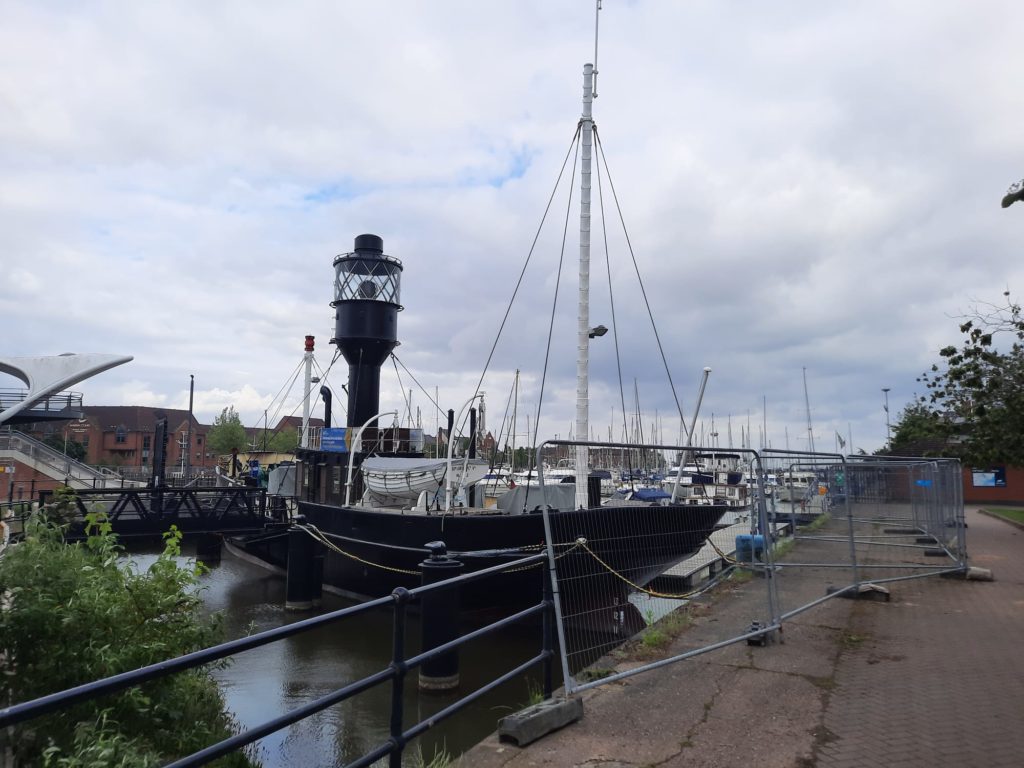
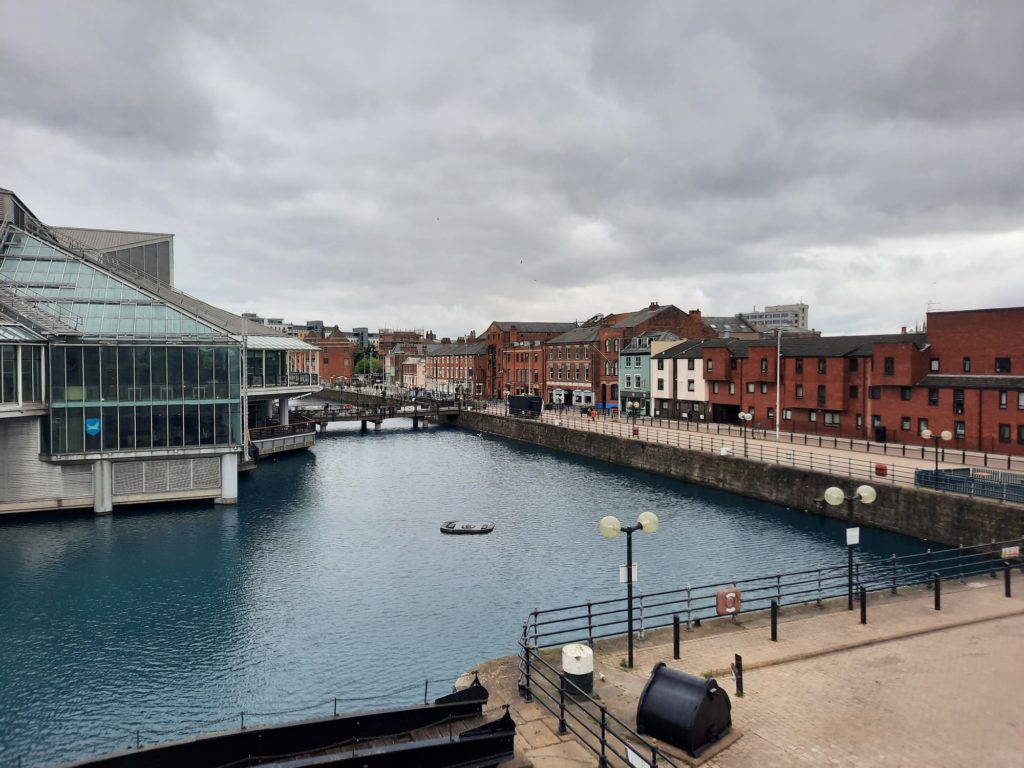
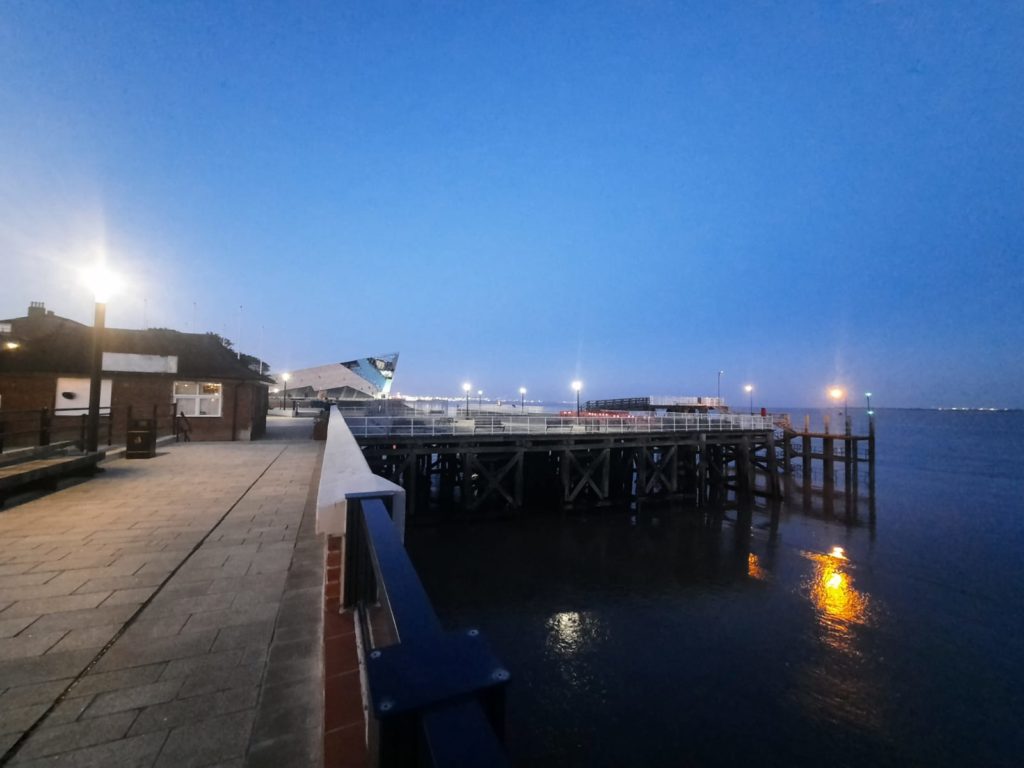
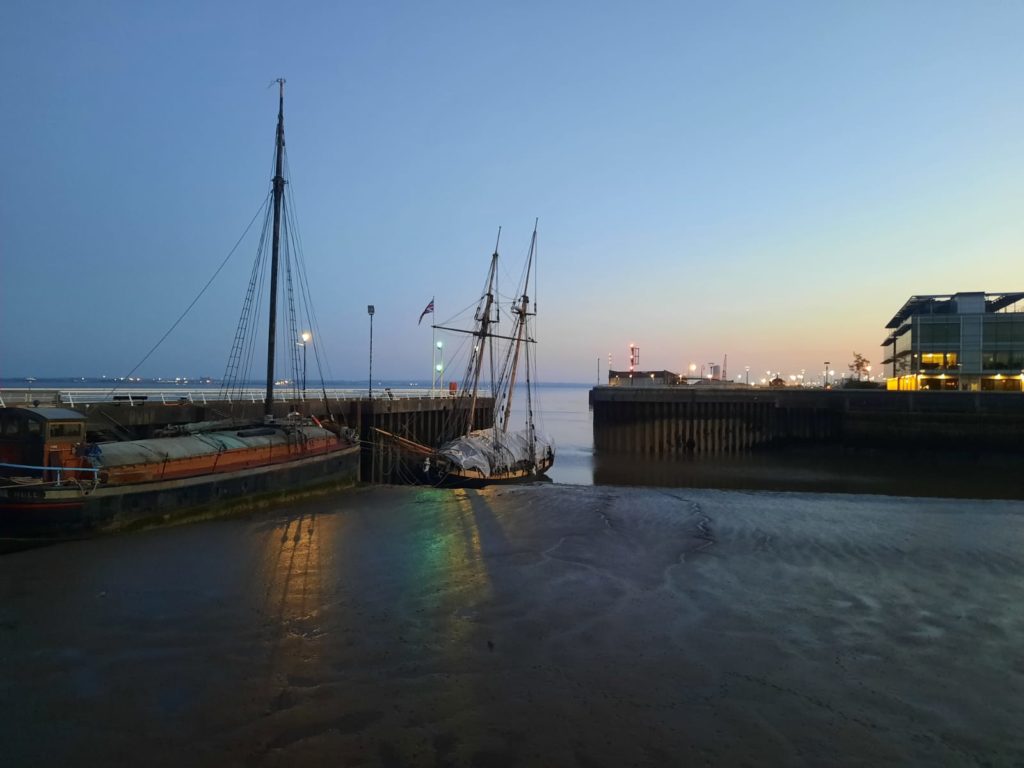
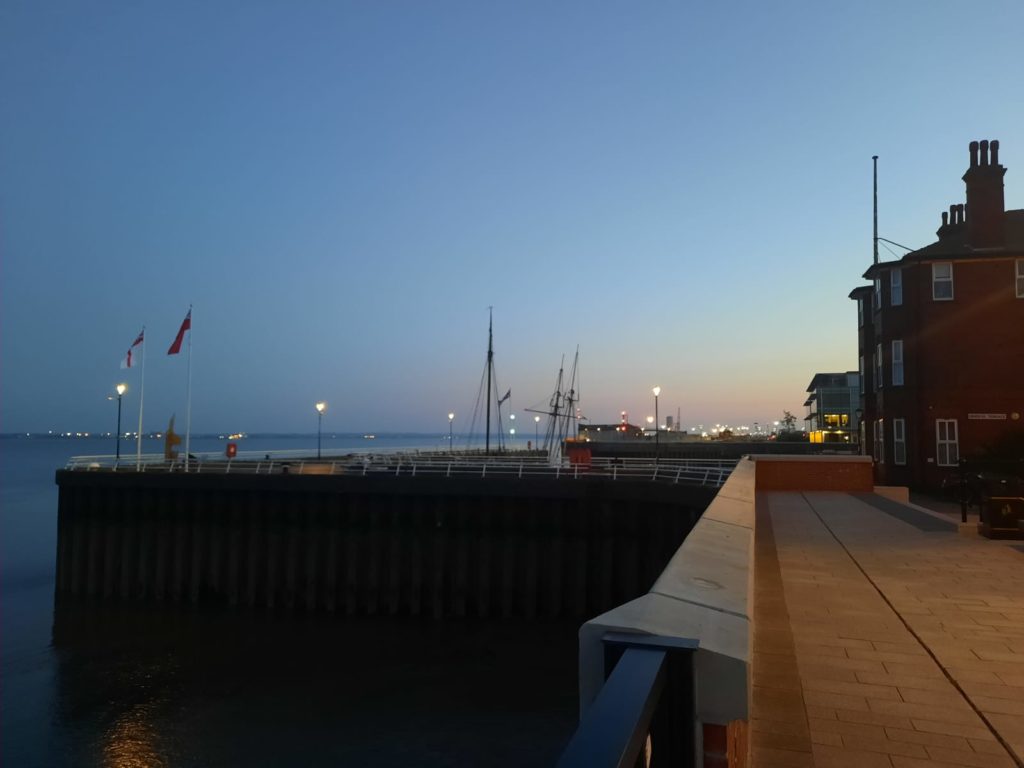
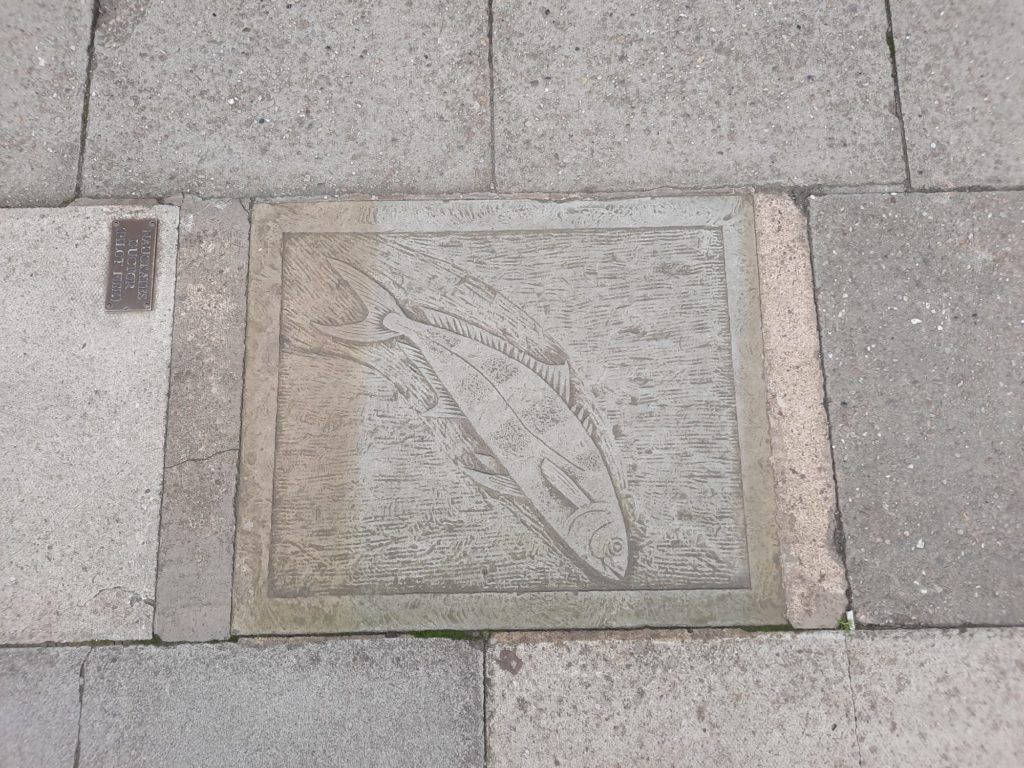
Hull and the Sea: Maritime History and Marine Life
Beyond museums, however, there are other ways to explore Hull’s history which get you out and about. One important lens through which to understand the city is of course its connection to the sea. Let’s not forget: Hull (or Wycke) came into being as a handy spot for a port. Maritime trade and other ways of making a living on and from the water have always been important here.
When I first found out Hull was a former Hanseatic town, I wanted to learn more. I love a bit of Hanseatic history and found King’s Lynn‘s Hanseatic-era old town charming. In Hull, however, it’s a very different story. The expansion of trade in Hull after the Hanseatic period erased most traces. The widespread destruction of WWII would have finished the job. So there are very few traces of the city’s medieval origins today.
If you do want to learn more about Hull’s maritime connections, a good way to do this is to follow its Fish Trail. Fish are hidden in plain sight in more than 40 spots around the city (see one example above). By following the map available online, you can locate them all and learn more about Hull’s fishing and maritime heritage. And walking around the city you do still get a sense of its maritime heyday underneath the post-war regeneration. Stop for a moment on the bridge above Princes Quay shopping centre, for instance, and you can imagine the docks that once stood here.
Or finally, you could get up close to some fishy specimens yourself! The Deep is a local aquarium. Its prominent, jutting structure on the waterfront is hard to miss. I didn’t have time to visit during my 24 hours in Hull, but from what I can see its collections are broad-ranging. Less of a local sea life focus than somewhere like Galway Atlantaquaria, but I don’t doubt there are some resident species from the Humber and North Sea.
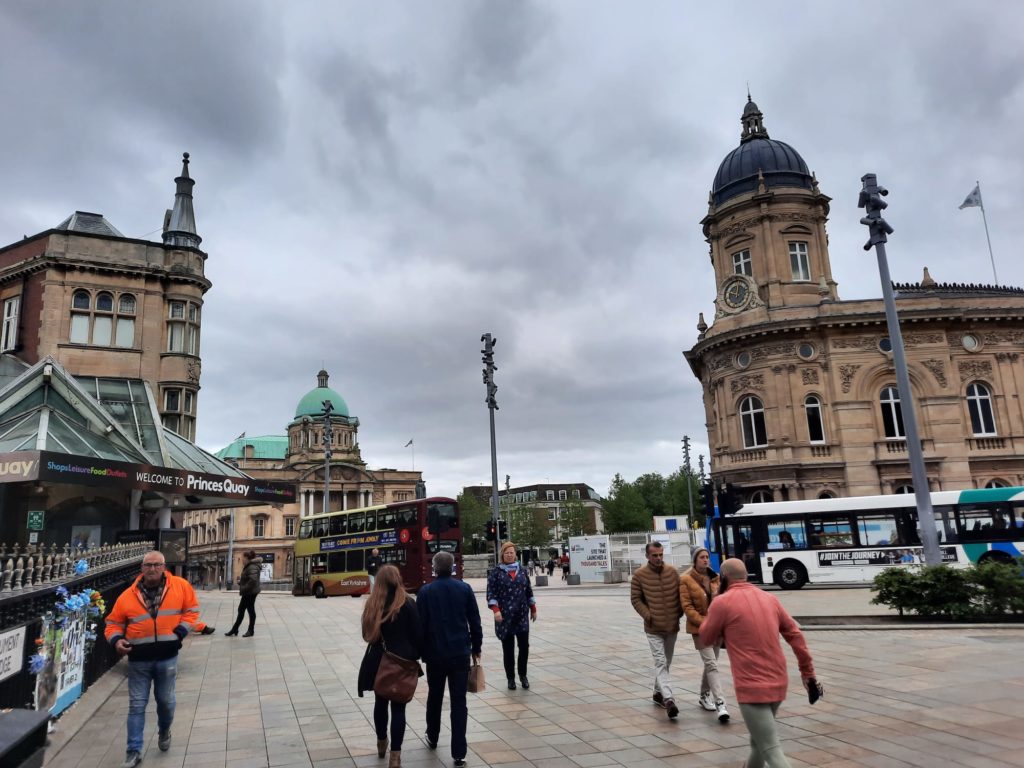
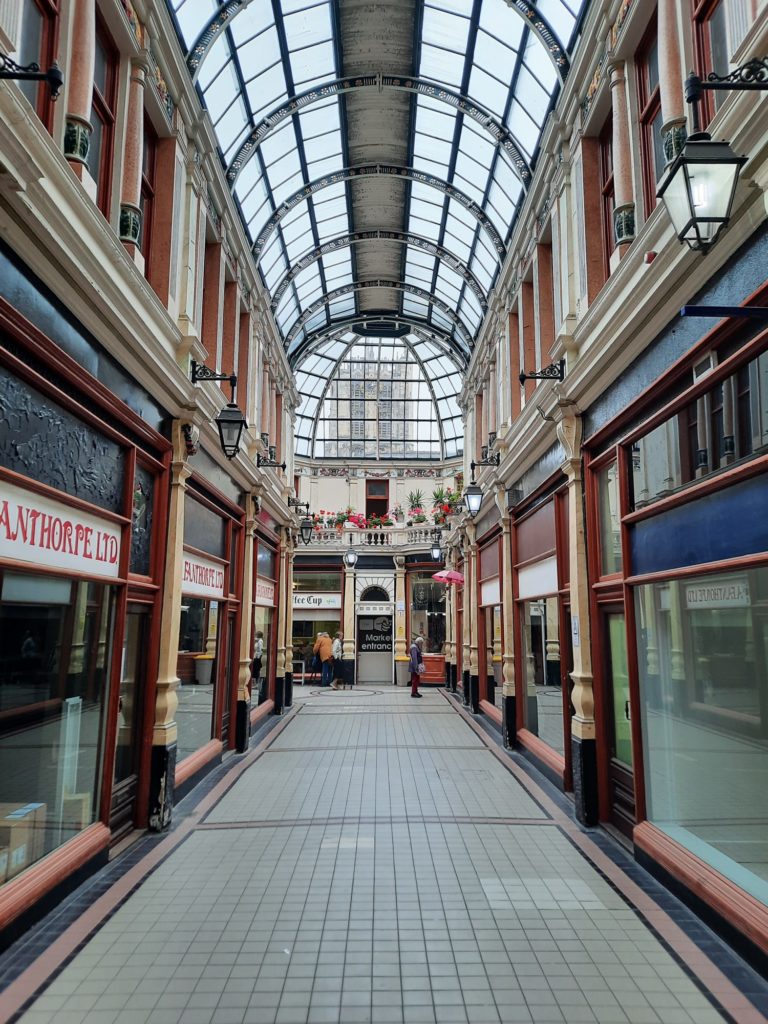
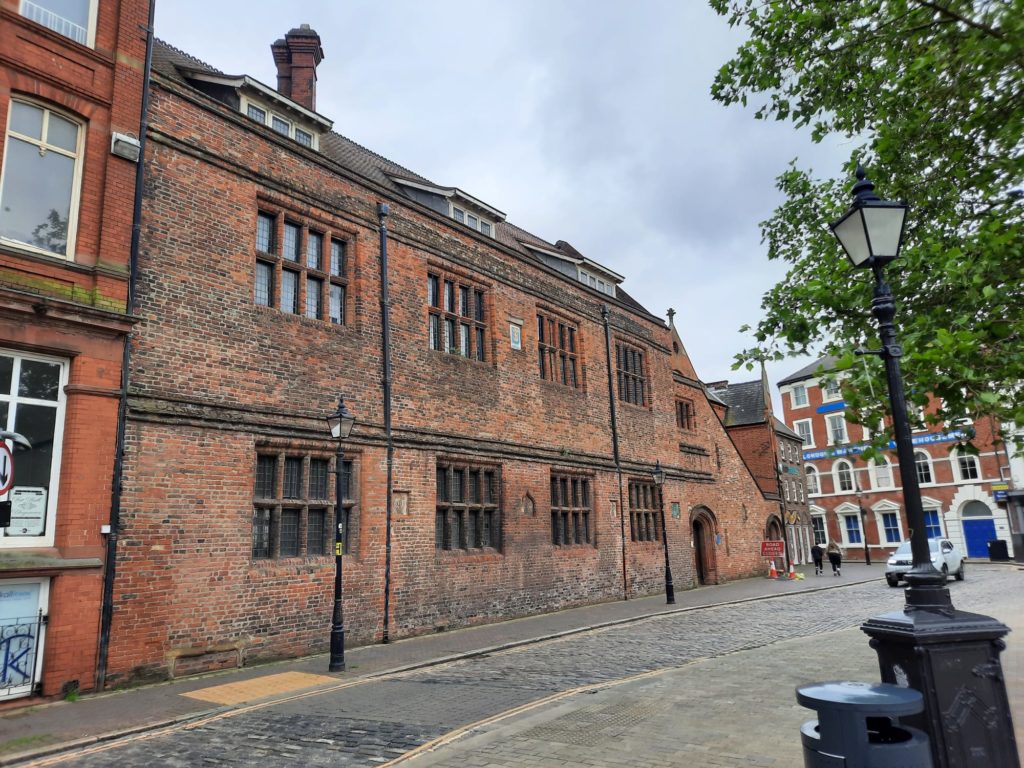
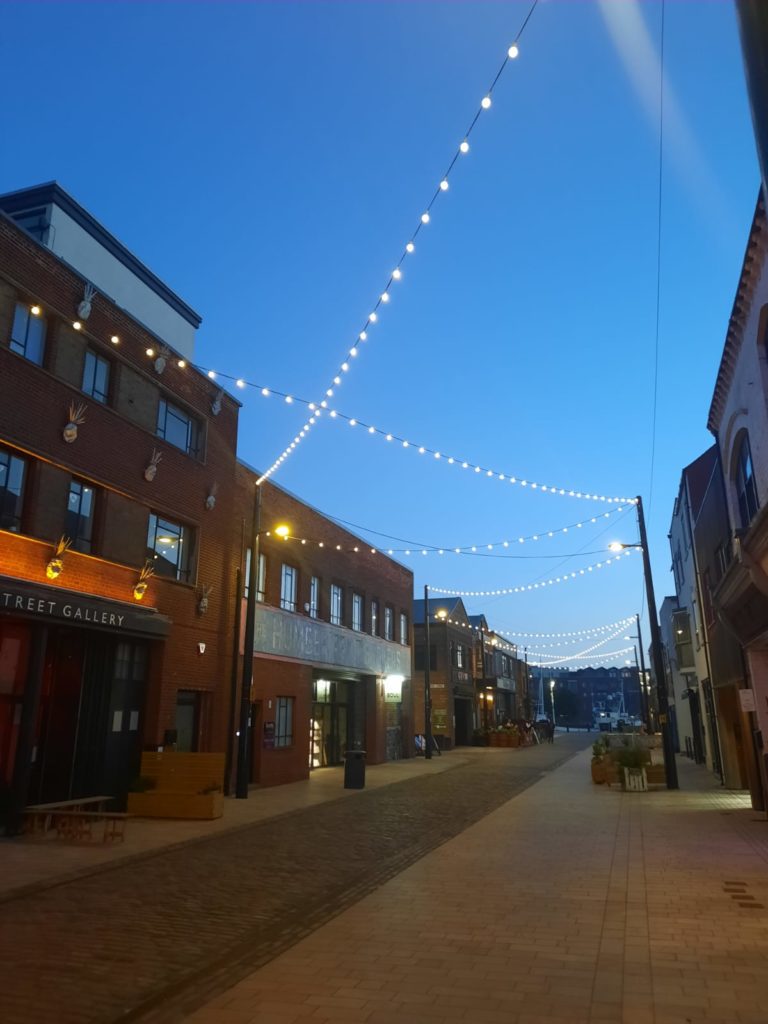
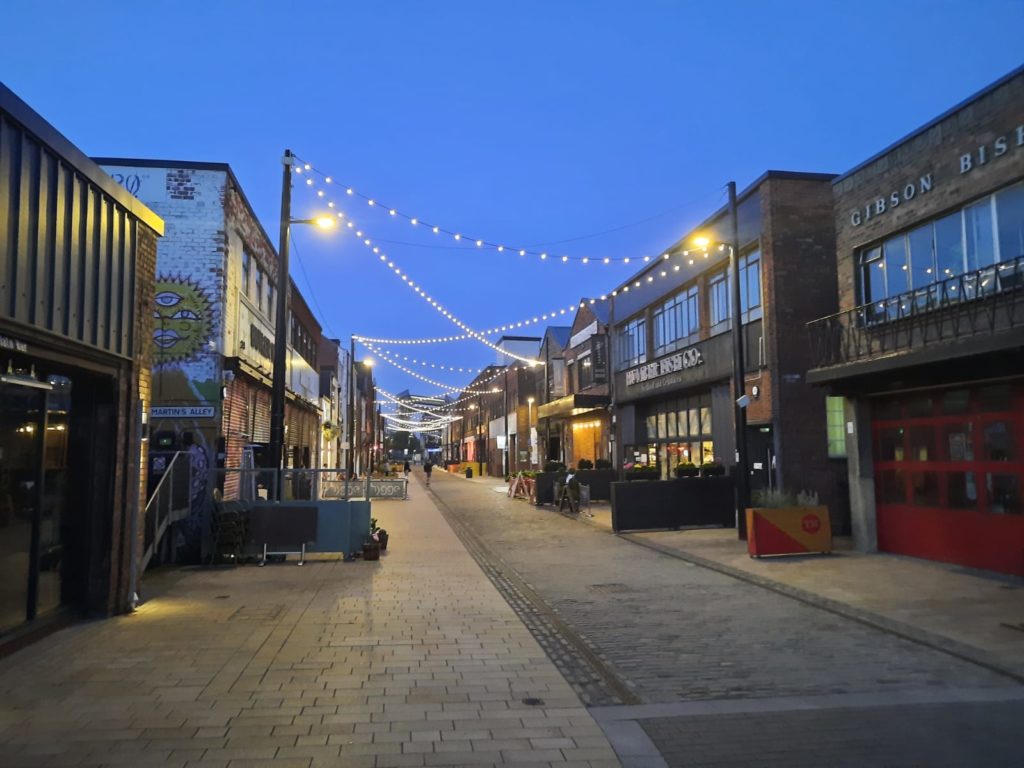
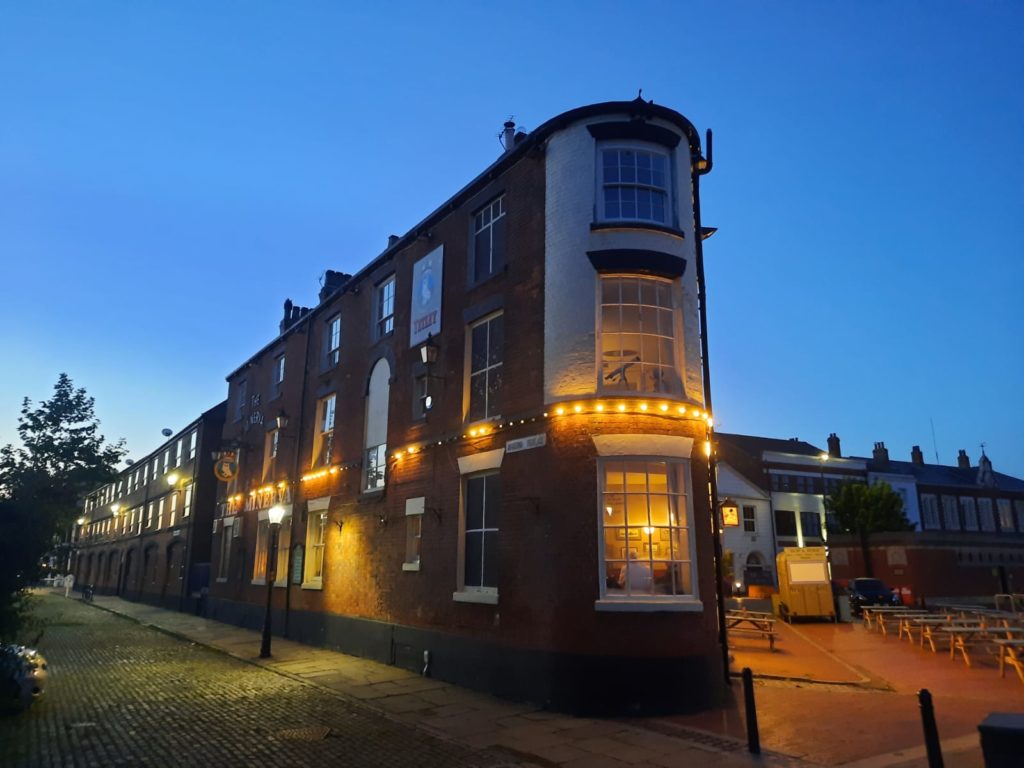
Heritage Districts: Old and New
I spoke a little above about the area around Princes Quay, and post-war regeneration. I think this bears a little more discussion. Because of the devastation the city faced during WWII and subsequent economic decline, it has naturally been a candidate for many regeneration projects. Assuming you will stick fairly close to the centre of Hull during your 24 hours here, you will see various of these efforts from recent decades.
Naturally, a lot of these projects are around Hull’s former docklands. We stayed, for instance, at a hotel on Hull Marina. The marina opened in 1983 and stands on the former Railway Dock and Humber Dock. As regeneration projects go it’s rather of its time: I feel like it reflects a 1980s optimism that if you build a marina, yachting aficionados will come. But it has created pleasant waterfront spaces, and is home to the historic Spurn Lightship (currently closed).
Continuing around the docklands, there are some nice historic buildings dotted around. Don’t miss The Minerva, which doubles as a rest and refreshment stop. We’ll talk about some other old pubs in a bit. And for both lunch and dinner during our day in Hull we found ourselves on Humber Street, a formerly derelict area transformed through a regeneration project into an ‘urban village’. Independent businesses create a vibrant atmosphere, and the nearby Fruit Market area is also home to a growing tech hub.
Heading towards the Old Town, you will encounter more heritage districts. Some of these have come full circle from regeneration back into decline. The city’s covered arcades, for me, fall into this category. Around the Minster I finally saw some genuinely old buildings, some of the very few pre-Victorian ones I spotted.
What I found most interesting was comparing different heritage projects: which have worked, and which haven’t. Spotting what are clearly 1980s and 90s efforts at reclaiming and rehabilitating history is history in itself, and tells the story of a city constantly reinventing and improving itself.
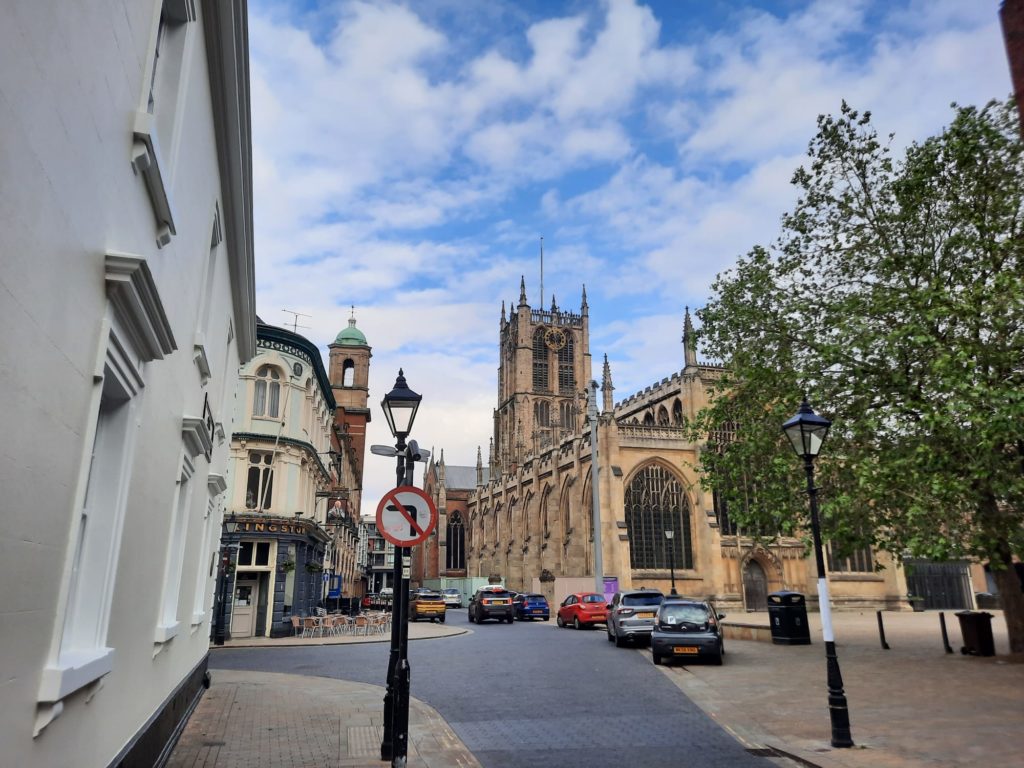
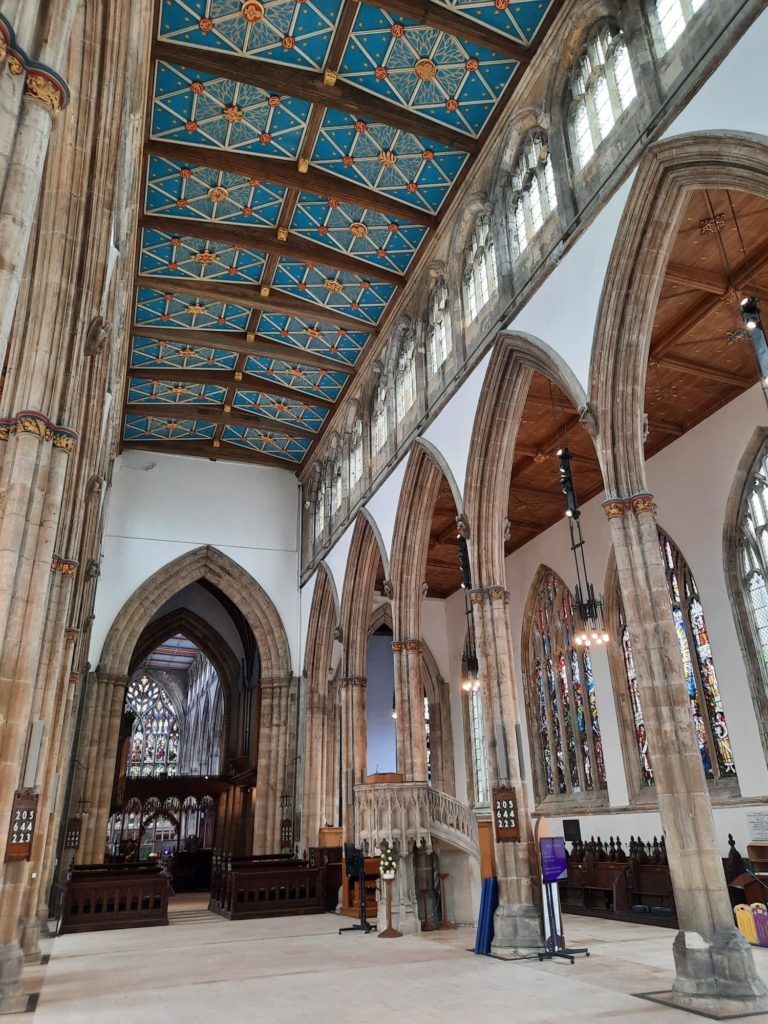
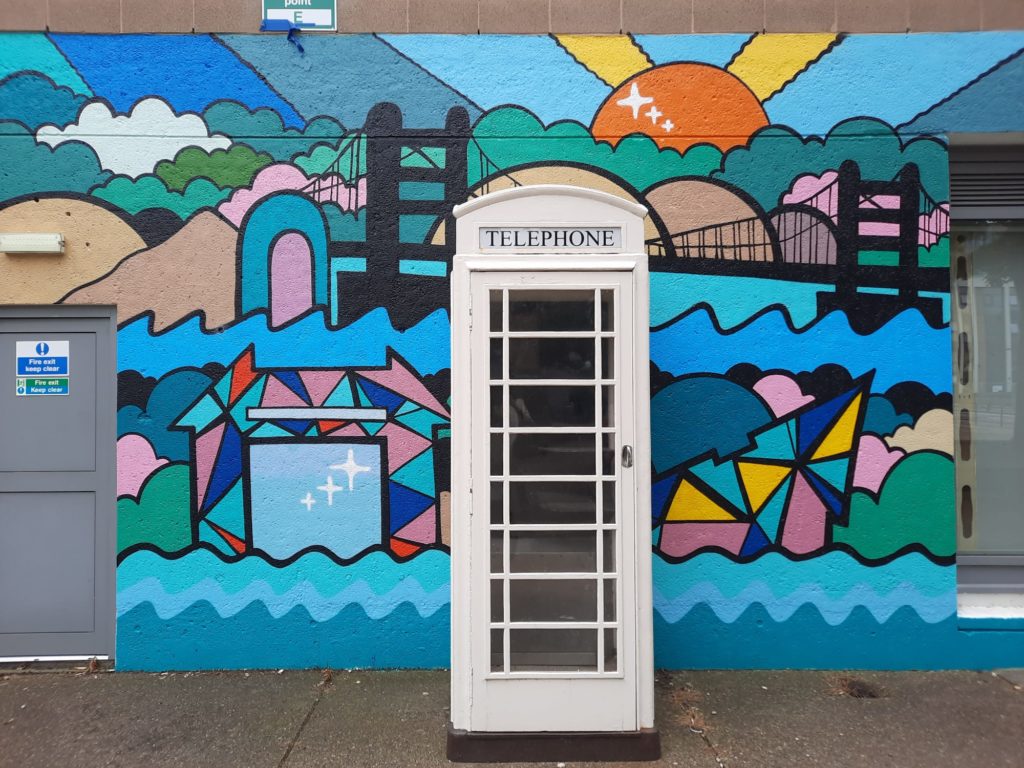
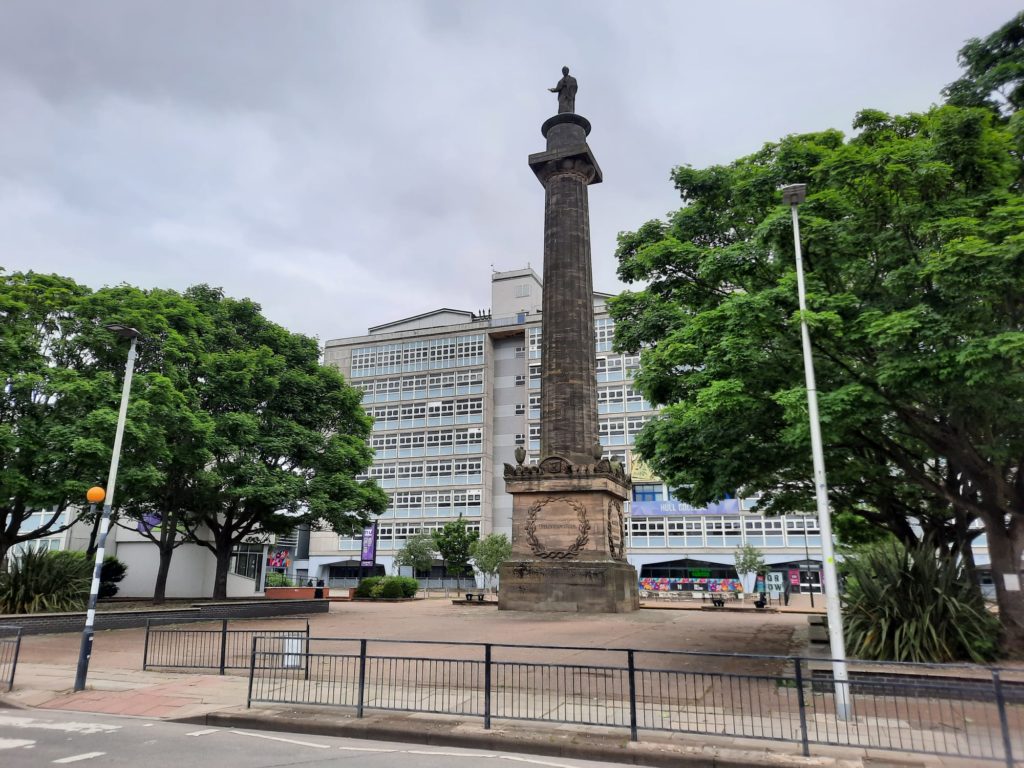
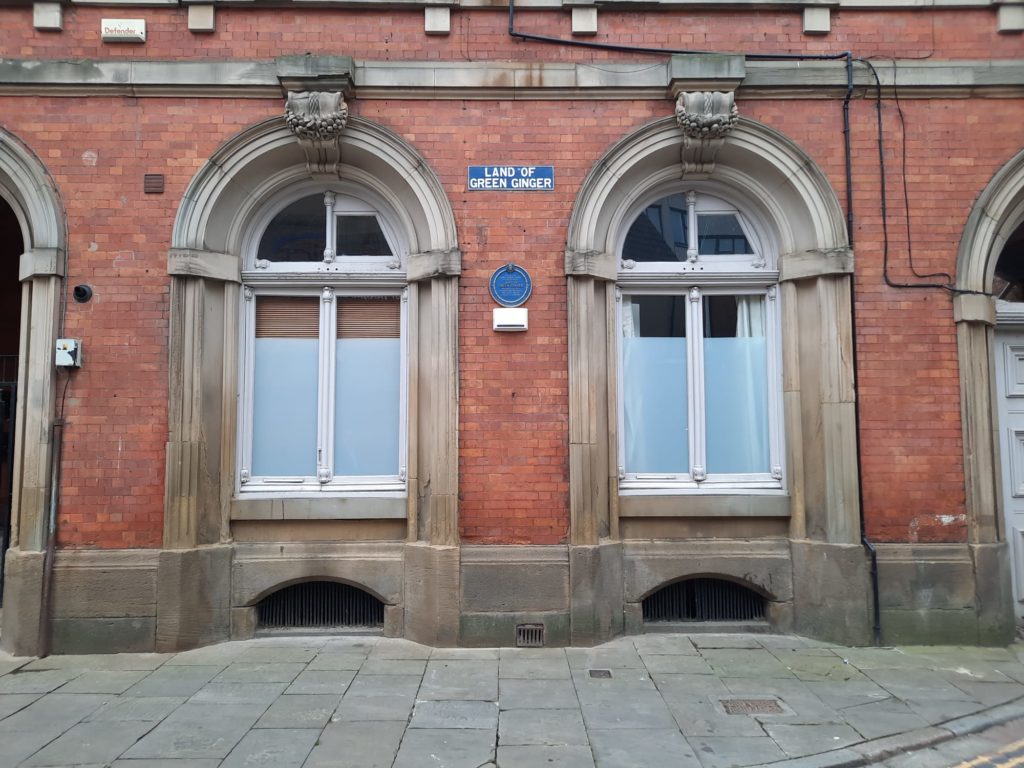

Other Sights & Final Thoughts
We have talked quite a lot about Hull now, and you’ve definitely got a few ideas of what to see and do while you’re there: museums, The Deep, Humber Street and so on. But before we finish up, I would love to impart a few more suggestions. These are in no particular order, and in no way an exhaustive list.
- Pubs. Go to some pubs while you’re in Hull. You don’t have to drink, a meal would do too. But there are some great historic establishments which are full of charm and character. I liked William Hawkes, a free house with lots of horse brasses on the walls. Or there’s The Minerva, which I mentioned before. The George Hotel apparently boasts England’s smallest window. And while I would love if it were named something else, Ye Olde Black Boy is without doubt a nice historic pub.
- The Minster. At the other end of the cultural spectrum is Hull’s Minster. Parts of the church date back to the 1300s. Hull doesn’t have a cathedral so this is the closest thing: it was Holy Trinity Church until an upgrade to Minster timed to coincide with Hull’s year as City of Culture in 2017. Free entry but donations welcome.
- The Wilberforce Monument. William Wilberforce (1759-1833) was an MP and a vocal abolitionist. He died only a few weeks after the Slavery Abolition Act he championed. Within days the people of Hull were petitioning for a monument in his honour, and this doric column was erected in 1834. The current location isn’t the original and doesn’t quite do it justice, but the monument is still worth a visit.
- Hull’s white phone boxes. It’s not the 20th century so I’m not suggesting you will need to make a phone call from one of them, but look out for white phone boxes while you’re in Hull. Hull is the only city in the UK with its own independent telephone network company, today called KCOM. It’s sadly now privatised, but helped Hull become an early adopter of new technologies and fibre broadband.
- The Land of Green Ginger. One of the delightful things about travelling the UK are the many eccentric sights you will encounter. The Land of Green Ginger, for instance, is a street name. The street is by any other measure decidedly ordinary. Its name may derive from a spice shop which once stood here: one more connection to the city’s maritime trading past.
And so, on that note, I leave you. Hull is an engaging and interesting place to spend 24 hours, with enough to fill the agendas of those who wish to stay longer. I hope this small guide helps you to plan your own time in Kingston upon Hull!
Trending
If you see this after your page is loaded completely, leafletJS files are missing.

